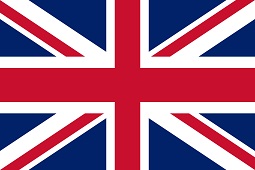Most hoses have three functional layers—the tube, reinforcements, and the cover—assembled in a flexible “laminate design” or “composite structure.” Being flexible lets the hose move, flex, easily route through bulkheads, dampen pressures surges, and withstand vibration (as compared to rigid pipe or tubing).Hoses are built and tested according to industry specifications such as SAE and EN. Engineers should be familiar with specifications related to equipment the hoses they design will go on. They provide guidelines for dimensions, material properties, and minimum performance characteristics for major types of hose and couplings.The tube conveys the fluid and is commonly made of rubber compounds and plastic. It’s critical that the tube resist fluids it carries an
d is exposed to; permeation by chemicals; and both high and low temperatures.Reinforcements include natural and synthetic fibers, wires and cables, and monofilament. They help hoses withstand internal and external pressures.Covers, which are commonly made of rubber, plastics, and textiles, protect reinforcements from the environment. They resist abrasion, chemicals, weathering, and ozone..

Couplings make leak-free connections to the hose (coupling end) and attach the hose to different components in the hydraulic system (termination end). Most couplings have two parts, a stem and ferrule. The stem conveys the fluid, attaches to the hose, and provides a seal between the stem and hose. The ferrule attaches to the reinforcements and serves as a “weather seal” to protect the hose and coupling from the environment. Both are typically made of carbon or stainless steel, and are sometimes plated or coated to improve chemical or corrosion resistance.Couplings on the market include one- and two-piece designs. In the one-piece versions, the stem and ferrule are pre-attached or staked together as one part. Two-piece designs have separate stems and ferrules which are joined by crimping.The termination end forms a leak-free connection between the hose and a port, adapter, or another hose. There are many different types of end connections specified by industry standards (such as SAE J516). Knowing how they fit together is key to selecting the best termination for an application.

Most hydraulic fluids are petroleum-based. Others are water-based, water glycol, or synthetic-based (such as phosphate esters). In the past, hydraulic-fluid leaks have contaminated soil and fouled water supplies. As a result, the industry is moving to more environmentally friendly fluids.“Green” fluids are typically synthetic (primarily ester-based) or vegetable-based. Vegetable oils are gaining popularity because they cost less and are more biodegradable than synthetics. They also have excellent lubricity and a high viscosity index. The downside is their limited temperature range and rapid oxidation at higher temperatures.Biodegradable fluids might be great for the environment, but they are tough on hoses. They permeate through standard hose tubes, causing cover blisters and sweating moisture on hose covers, which leads to premature hose issues and creates a mess of oil and dirt.Most manufacturers use high-grade nitrile tubes for environmentally safe hydraulic fluids. Nitriles are tough enough to handle aggressive biodegradable fluids such as synthetic esters, polyglycols, and vegetable oils at operating temperatures up to 250°F. Nitrile materials also allow less permeation than neoprene when used with petroleum-based oils. (Permeation, or effusion, is fluid loss through the tube and hose.)Because permeation may expose the entire hose assembly to fluid, check the fluid’s compatibility not only with the tube, but with the reinforcements, cover, fittings, and seals. The same holds for assemblies that handle special oils or chemicals.The most critical hose and coupling material consideration is chemical resistance, so confirm what fluids will run through the hose. Which fluids or gases might permeate the tube and potentially weaken the reinforcement layers? And what materials will touch the hose cover in normal service or cleaning?What corrosive chemicals will touch the coupling bore, ferrule, and termination? Does the termination use O-rings or elastomeric seals? Are internal system fluids compatible with seal components?Will these chemicals be in constant or intermittent contact with the hose and couplings? What are the chemical concentrations and are their properties affected by temperature?

There are several resources that provide details on materials’ chemical resistance. The first, a chemical resistance guide, describes the general properties of tube and cover compounds. For example, EPDMs (type P) are rated excellent for weather and ozone, but poor for petroleum oils. In comparison, butadienes (type C) are rated poor for weather and ozone, but excellent for petroleum oils.These generic ratings can point toward the right family of hose materials, but are only a guide for high-level properties. For example, not all nitrile compounds are the same. That is because all compounds are really recipes of many ingredients. Hose compounds can be modified to meet or exceed performance requirements of specific applications.The second resource are chemical resistance tables. Most hose and coupling manufacturers list common chemicals and their compatibility with hose materials. A third resource are the hose and coupling catalogs or engineering specifications. They tell readers what specific hoses were specifically compounded to resist.

A creative way to determine chemical compatibility for uncommon, proprietary, and trade-name fluids is the Material Safety Data Sheet (MSDS). It often lists individual chemical components of brand-name products and percentages they contain. The MSDS also provides handling, storage, and safety equipment recommendations. These recommendations list materials (such as neoprene gloves) compatible with proprietary chemicals.
The best resources for non-standard chemical resistance information are hose manufacturers and their technical support lines or product application engineering departments. They have detailed information about their hose compounds and coupling materials. They also have access to the chemists, product engineers, and labs to run tests if no published chemical information exists.












